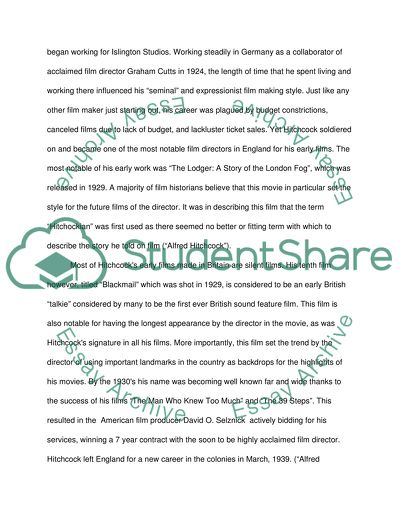Cite this document
(“Alfred Hitchcock Essay Example | Topics and Well Written Essays - 1250 words - 1”, n.d.)
Retrieved from https://studentshare.org/visual-arts-film-studies/1496952-alfred-hitchcock
Retrieved from https://studentshare.org/visual-arts-film-studies/1496952-alfred-hitchcock
(Alfred Hitchcock Essay Example | Topics and Well Written Essays - 1250 Words - 1)
https://studentshare.org/visual-arts-film-studies/1496952-alfred-hitchcock.
https://studentshare.org/visual-arts-film-studies/1496952-alfred-hitchcock.
“Alfred Hitchcock Essay Example | Topics and Well Written Essays - 1250 Words - 1”, n.d. https://studentshare.org/visual-arts-film-studies/1496952-alfred-hitchcock.


